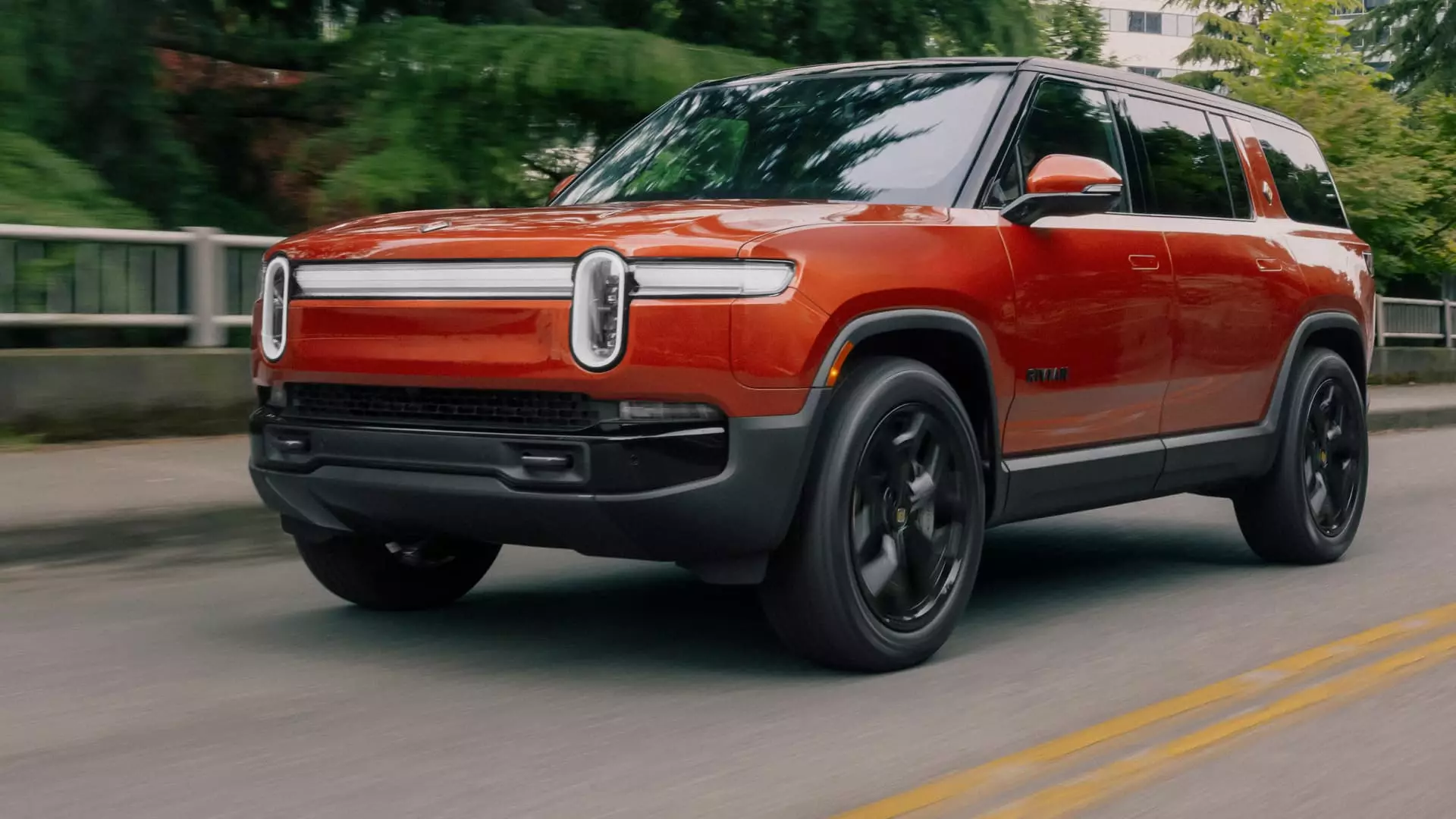Electric vehicle (EV) manufacturer Rivian Automotive is currently navigating a complex landscape of financial results and regulatory uncertainties. The company recently surpassed Wall Street expectations in its fourth-quarter earnings, achieving a significant milestone: its first gross quarterly profit. While this development is noteworthy, there are darker clouds on the horizon, raising questions about the company’s future sales performance and profitability.
Rivian reported a gross profit of $170 million for the last quarter of the previous year, a figure that reflects the income generated from production and sales, not accounting for additional costs. This impressive start has fueled optimism among investors, particularly as Rivian outlined a plan to deliver a “modest gross profit” in 2025. However, the overarching question of when the company will achieve overall profitability remains unanswered, keeping stakeholders on edge.
In terms of losses, Rivian forecasted an adjusted loss between $1.7 billion and $1.9 billion for 2025, a decline from the staggering loss of $2.69 billion reported in 2024. The anticipated delivery numbers, pegged at between 46,000 and 51,000 units, also suggest a drop from the 51,579 vehicles delivered in the previous year. Additionally, Rivian’s stock experienced fluctuations, initially rising approximately 7% in after-hours trading before settling down at $13.61 a share, a decrease of 2.3%.
Rivian CEO RJ Scaringe pointed to the prevailing “uncertainty” in the automotive market. Key variables include the potential withdrawal of federal incentives for EVs and evolving tariff policies, which could significantly affect Rivian’s business model. In a candid acknowledgment, the company highlighted that external influences could drastically reshape its 2025 expectations, signaling a readiness to adapt to potentially adverse conditions.
The company’s financial outlook incorporated considerations of “hundreds of millions” of dollars in anticipated EBITDA impacts due to weakened sales from the expected removal of tax credits for EV buyers. Rivian plans to invest capital expenditures between $1.6 billion and $1.7 billion this year, a notable increase from $1.41 billion in 2024. Such investments are aimed at preparing for the rollout of its upcoming “R2” midsize vehicles, which the company believes will be transformative for its growth and profitability.
In an effort to enhance accountability and transparency for investors, Rivian has decided to segregate its financial reporting into “Automotive” and “Software and Services” units. The latter includes revenue from a new joint venture with the established German automaker Volkswagen, implying an expansion into software to complement its core vehicle manufacturing business.
Rivian’s revenue for the fourth quarter climbed over 31% compared to the same period last year, bolstered largely by $299 million from regulatory credit sales. The company sells these credits to other automakers, aiding them in meeting emissions standards. Nevertheless, the potential impacts of regulatory changes—particularly those that may arise from political shifts—cast a shadow over the viability of such sales in the future.
Despite the upswing in quarterly revenue, Rivian still faced significant losses, with a reported net loss of $743 million, translating to 70 cents per share. This figure, while an improvement from the previous year’s loss of $1.52 billion, highlights the steep financial hurdles the company must overcome. The total loss for the entire year hit $4.75 billion, reinforcing that Rivian’s path to sustained profitability will be anything but straightforward.
While Rivian Automotive’s recent gross profit marks a pivotal point for the company, it still faces numerous challenges that could hinder its growth trajectory. The uncertainties surrounding governmental policies and market demand necessitate a cautious approach as Rivian prepares for its future. Investors may remain hopeful but need to brace for a landscape filled with potential pitfalls as Rivian presses forward in its mission to electrify the automotive world. The coming years will undoubtedly test the resilience and adaptability of this up-and-coming player in an ever-evolving industry.

